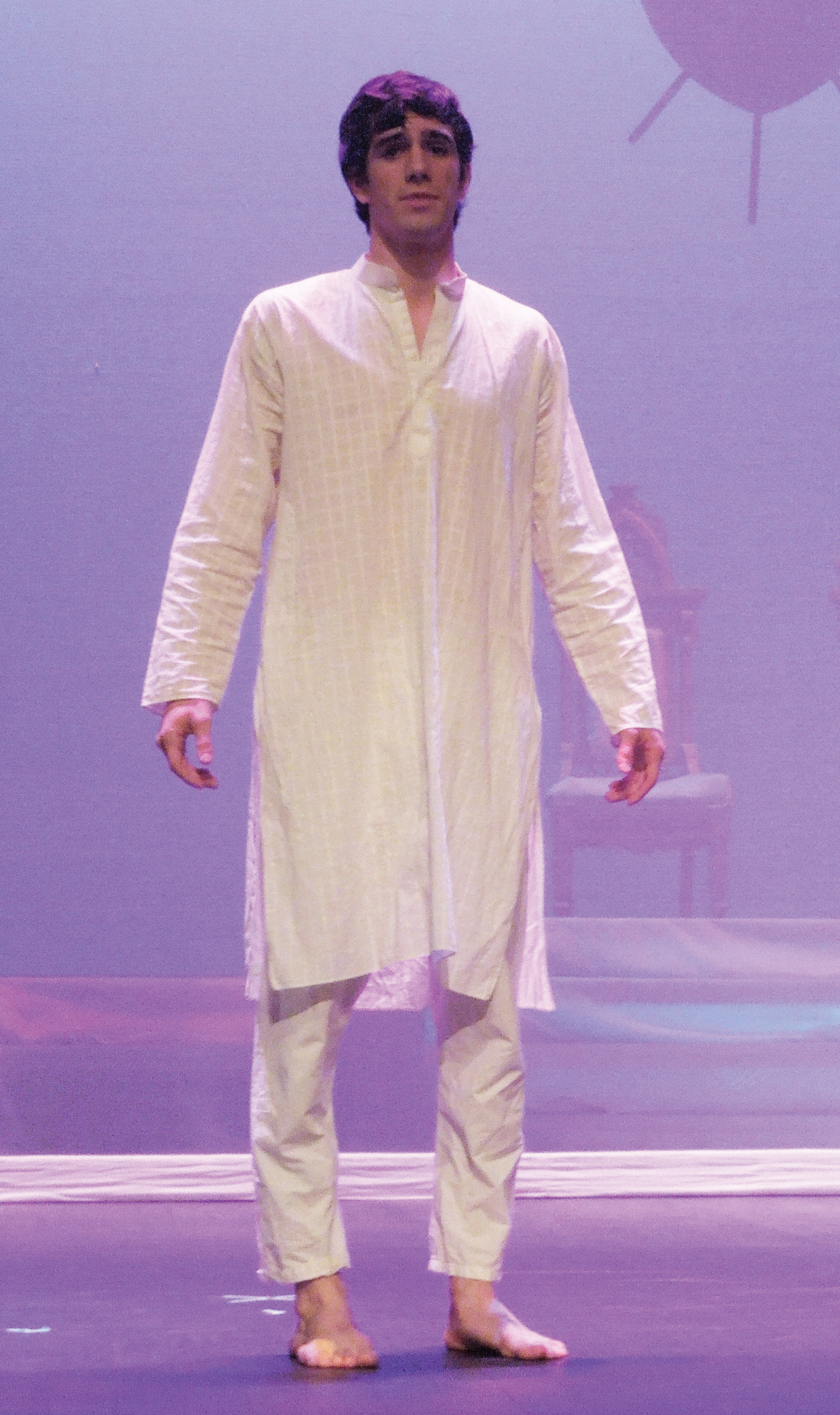Clayton Center Presents’ ‘Hamlet’ proves a success
Clayton Center Presents was able to attract a full house in their latest production of “Hamlet”
by William Shakespeare in the Ronald and Lynda Nutt Theatre. Directed by Robert Hutchens,
the play ran from Feb. 8-9 and lasted for a span of two hours.
House lights down, the play opened with a single white light onstage, the sound of a heart
beating and Hamlet, played by MC senior Walker Harrison, dressed in white to perform the
famous “To be or not to be” soliloquy. Though out of place in the continuity of the play, it was a
successful choice of Hutchens’ to better accommodate time restraints and to capture the audience
members’ attentions from the very beginning.
Within the first scene with the full court of Denmark, the audience received a glimpse of
one of the few aspects that slightly detracted from the overall play: the costumes. Not all of the
costumes were out of place. Queen Gertrude, played by Lisa Soland, was, for example, always
wearing a gown that reflected the time period of the play. The choice of the sparkly tulle fabric
shown on some of the female courtiers, however, drew the audiences’ eyes away from the
main focus and did not mesh with the design choices made with the rest of the costumes. Most
distractingly, the fabric was nowhere near historical accuracy.
All of the actors worked well together as an ensemble, though there were certain actors that
made more of an impression than others. For instance, Rosencrantz, played by Chase Condrone,
and Guildenstern, played by Daniel Chandler, worked in rhythm, taking cues from one another
successfully. The Gravedigger, played by Joseph McBrien, was a crowd favorite for his playful
disposition in his short, yet integral, performance.
In the supporting roles, Laertes was played by Cameron Hite. Hite’s anger and love for
his sister made it easy for the audience to agree with his plight for revenge. As for his sister,
Ophelia, played by Caitlin Campbell, Campbell made her performance memorable by playing
the classic scene of Ophelia’s insanity with controlled hysterics and with a calculating calm.
Horatio, played by John Robertson, was particularly eloquent during his final speech.
The most notable actor of the performance, however, was Harrison. Harrison was able to
alternate from a grieving man to a madman so seamlessly that he left the audience both perturbed
and, on occasion, laughing. His enunciation was particularly clear throughout his performance.
“Hamlet” was truly successful, however, because of the technical aspects of the performance.
With the use of a minimalistic blocking pattern for the stage, most notably when exercised with
private scenes, like with Claudius talking with Laertes, and few set pieces, such as the coat of
arms above the court, the set was able to help the players not seem dwarfed while on the large
stage of the Nutt theatre.
Though there were a few instances where chosen background noise might have seemed a tad
confusing, for instance when the Player King gives his speech for Hamlet, the selections were
overall appropriate and helped to tie scenes together.
Lighting was used heavily within the play, emphasizing the mood or a specific scene,
and though the crew presented a palate of colors for the lights, they blended well with the
minimalistic theme of the production.
Also notable, the fight choreography was particularly believable, and in the final fight between
Laertes and Hamlet, no movement appeared forced or overly comical.
Overall, with its shorter time frame, dedicated actors and hardworking technical crew, the
performance was received well by most of whom attended. It is truly a shame that “Hamlet” only
ran in the public for two days.

